Loading...
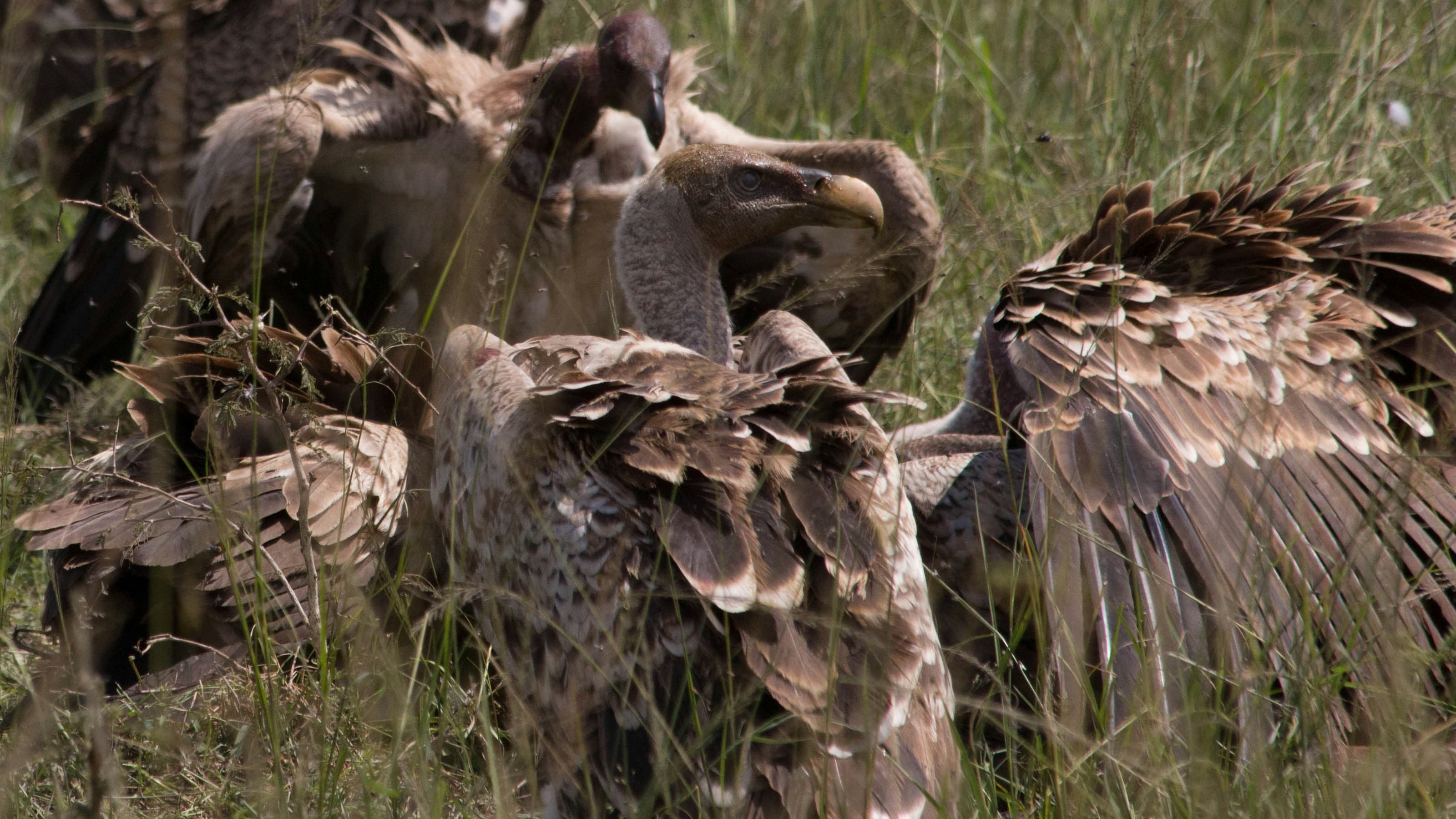
Serengeti Great Migration Safari - 6 Days
Witness nature's greatest spectacle - the Great Wildebeest Migration - on this unforgettable 6-day Tanzanian safari. Follow over 2 million wildebeest, zebras, and gazelles as they traverse the Serenge...
Photo Gallery

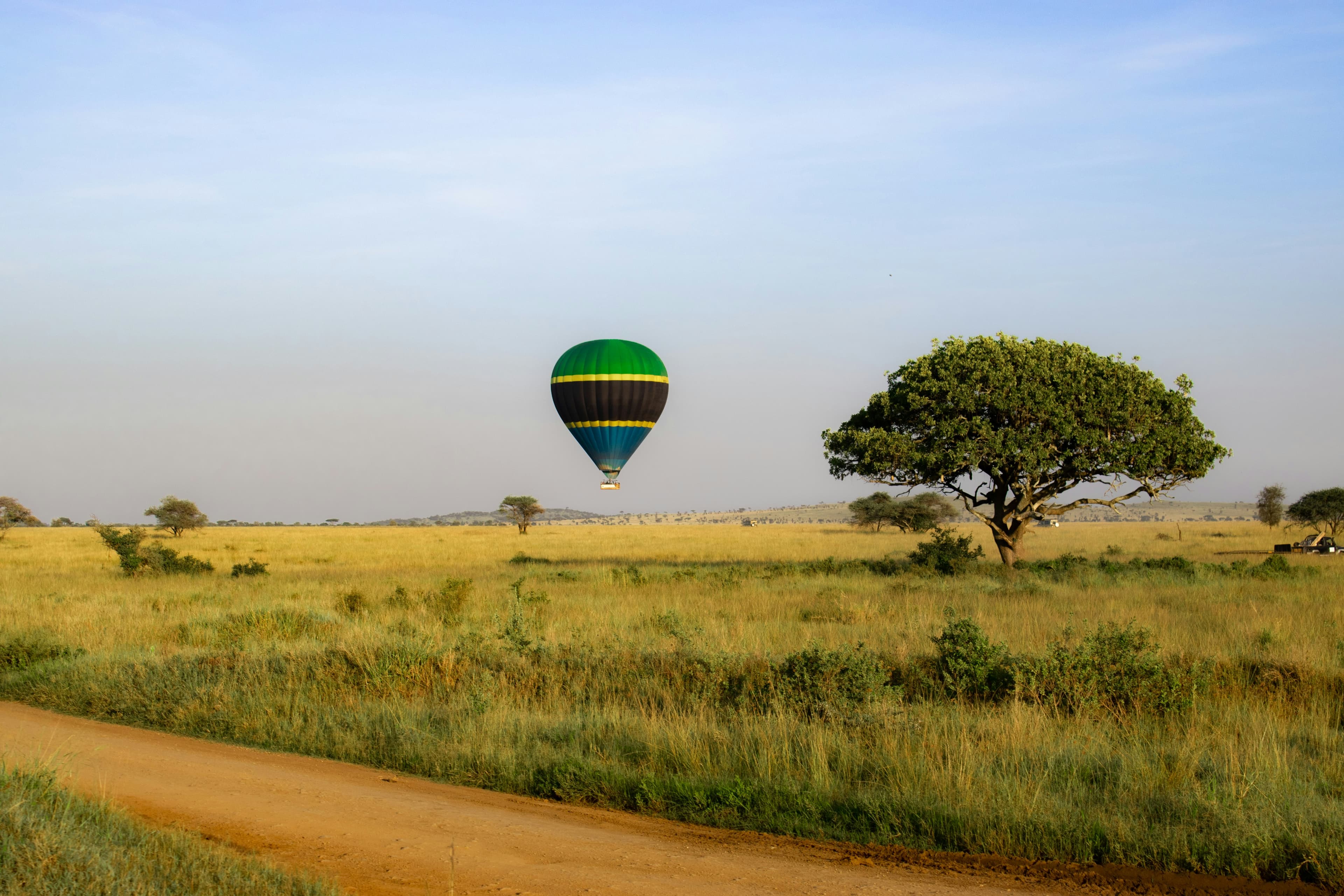
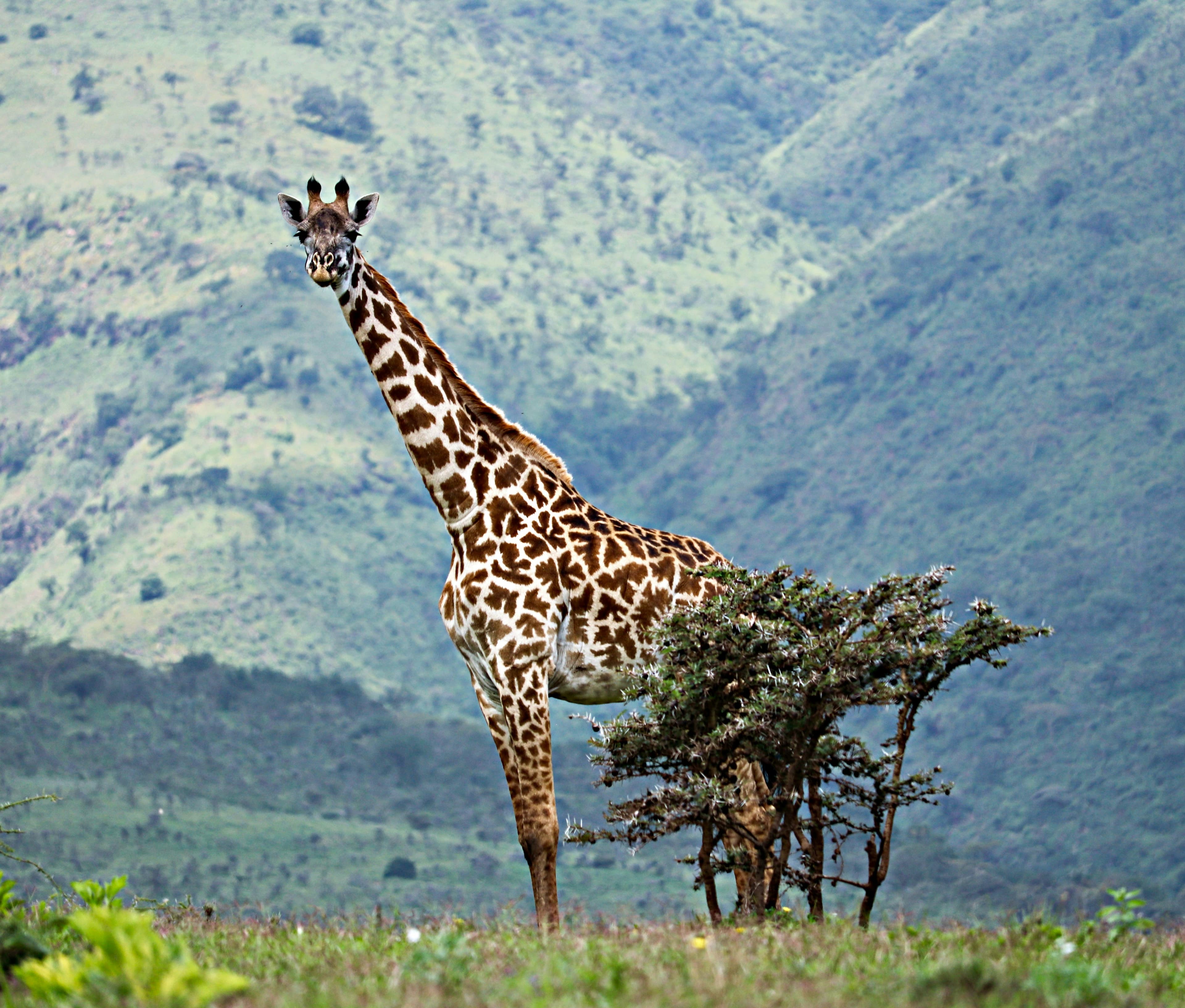
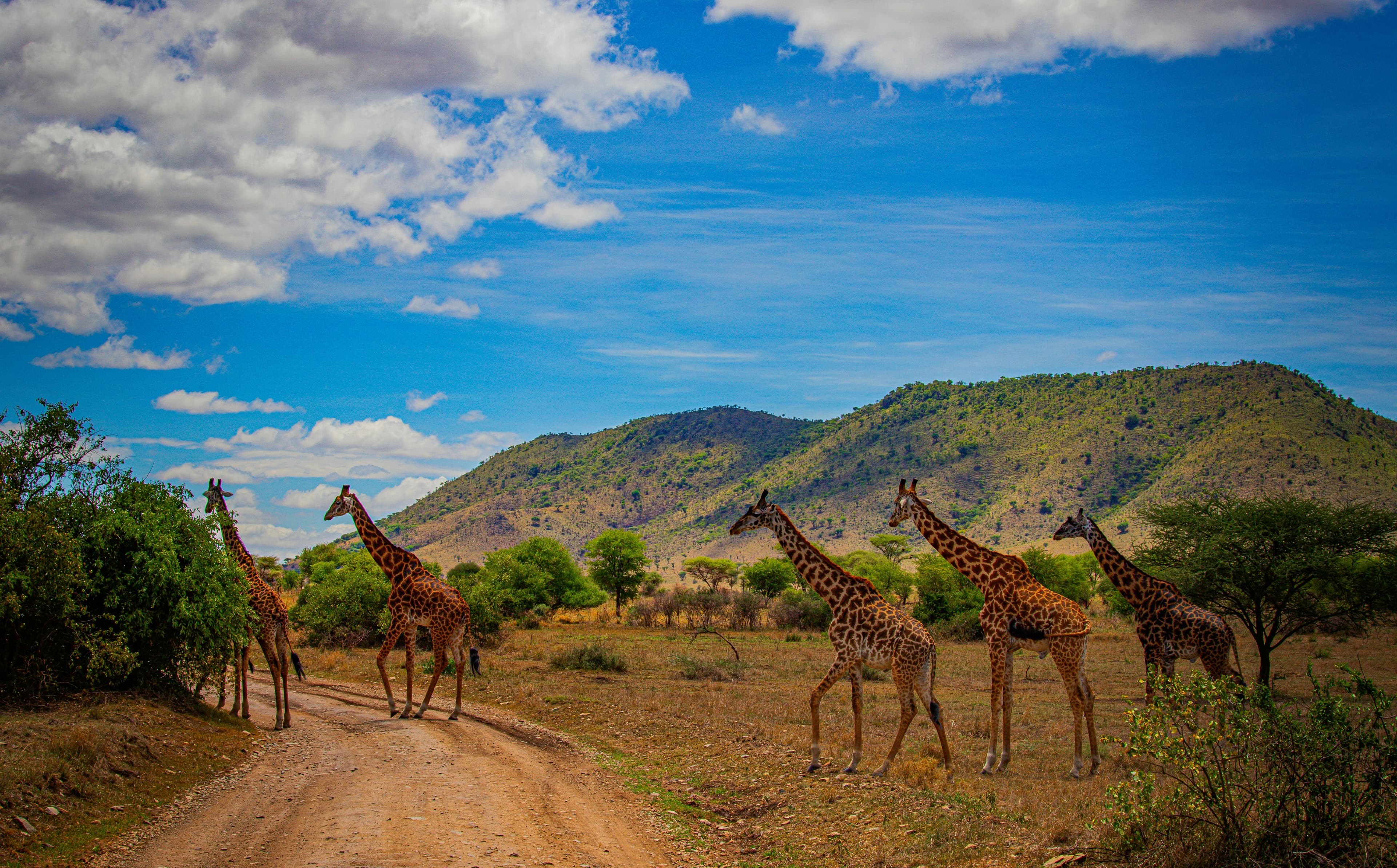
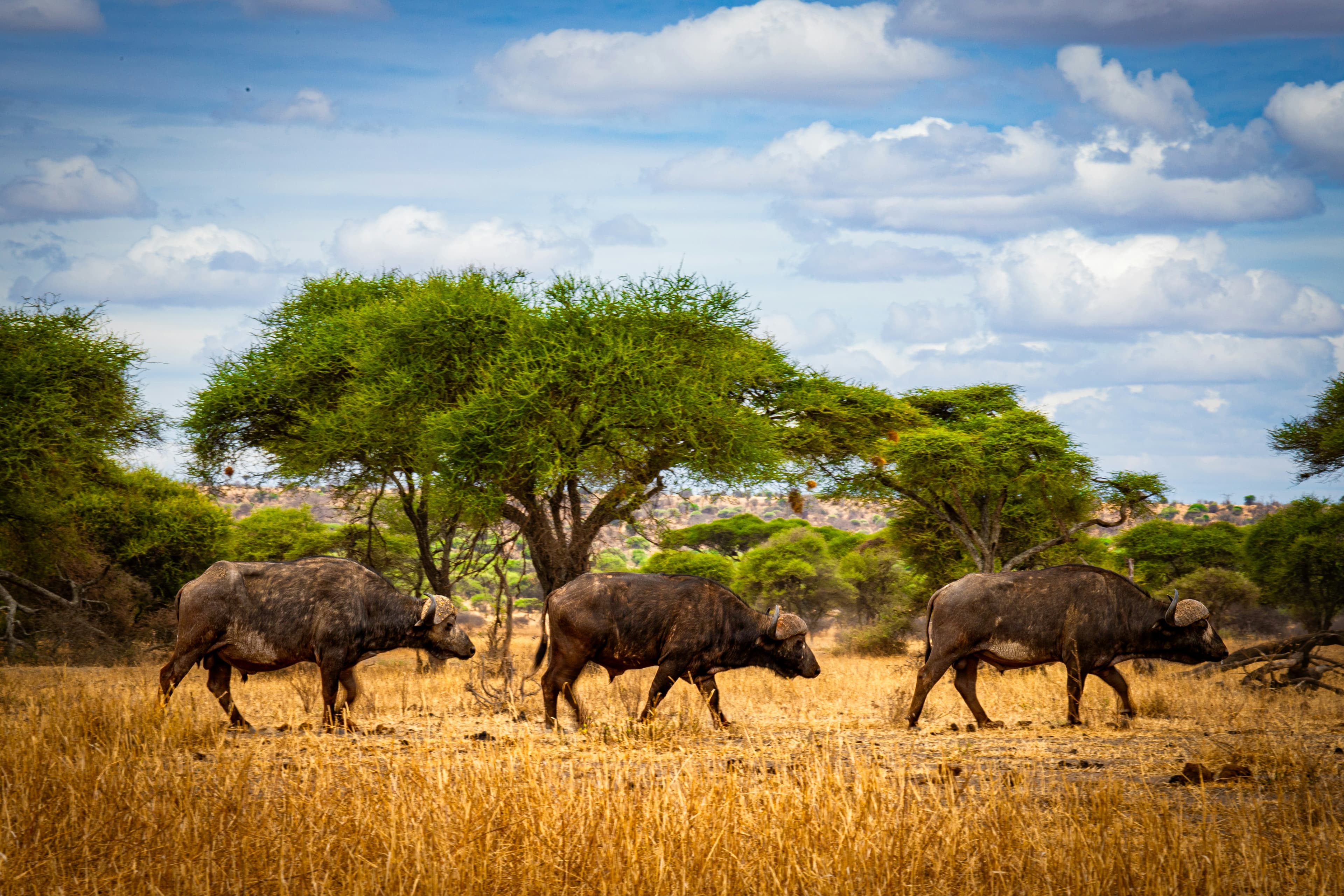
Tour Overview
Witness nature's greatest spectacle - the Great Wildebeest Migration - on this unforgettable 6-day Tanzanian safari. Follow over 2 million wildebeest, zebras, and gazelles as they traverse the Serengeti's endless plains in their eternal quest for fresh grazing. Experience dramatic river crossings, predator action, and the raw power of nature. Combined with Ngorongoro Crater, Tarangire elephants, and Lake Manyara, this comprehensive northern circuit safari showcases Tanzania's finest wildlife destinations.
6-day Tanzania safari: witness Great Migration, Serengeti endless plains, Ngorongoro Crater Big Five, Tarangire elephants. River crossings, calving season, predator action. Luxury tented camps. Book your dream safari!
Tour Highlights
Day-by-Day Itinerary
1Arusha to Tarangire National Park - Elephant Kingdom
Your Tanzania adventure begins with pickup from Kilimanjaro International Airport or Arusha hotel at 8:00 AM. After safari briefing and gear check, drive southwest for 2 hours (120km) to Tarangire National Park, named after the Tarangire River that winds through the park - the only permanent water source during dry season attracting enormous concentrations of wildlife. Enter the park around 10:30 AM and begin game viewing immediately. Tarangire is famous for having Tanzania's largest elephant population (3,000+) - you'll see huge herds with adorable calves. The park's landscape is iconic: massive ancient baobab trees (some over 1,000 years old) dotting golden grasslands, providing the quintessential African safari backdrop. Besides elephants, spot lions, leopards, cheetahs, buffaloes, giraffes, zebras, wildebeest, impalas, and the fringe-eared oryx (endemic to Tanzania). Bird watchers will love the 550+ species including the endemic yellow-collared lovebird. Enjoy picnic lunch under an acacia tree watching elephants at a waterhole. Afternoon game drive explores different areas - the Silale Swamp in dry season attracts massive wildlife concentrations. Exit the park around 5:00 PM and drive to Sangaiwe Tented Lodge or similar for dinner and overnight, sharing safari stories around the campfire.
Lunch, DinnerSangaiwe Tented Lodge or similar
Arusha to Tarangire National Park - Elephant Kingdom
Your Tanzania adventure begins with pickup from Kilimanjaro International Airport or Arusha hotel at 8:00 AM. After safari briefing and gear check, drive southwest for 2 hours (120km) to Tarangire National Park, named after the Tarangire River that winds through the park - the only permanent water source during dry season attracting enormous concentrations of wildlife. Enter the park around 10:30 AM and begin game viewing immediately. Tarangire is famous for having Tanzania's largest elephant population (3,000+) - you'll see huge herds with adorable calves. The park's landscape is iconic: massive ancient baobab trees (some over 1,000 years old) dotting golden grasslands, providing the quintessential African safari backdrop. Besides elephants, spot lions, leopards, cheetahs, buffaloes, giraffes, zebras, wildebeest, impalas, and the fringe-eared oryx (endemic to Tanzania). Bird watchers will love the 550+ species including the endemic yellow-collared lovebird. Enjoy picnic lunch under an acacia tree watching elephants at a waterhole. Afternoon game drive explores different areas - the Silale Swamp in dry season attracts massive wildlife concentrations. Exit the park around 5:00 PM and drive to Sangaiwe Tented Lodge or similar for dinner and overnight, sharing safari stories around the campfire.
2Tarangire to Central Serengeti - Into the Endless Plains
After early breakfast (7:00 AM), depart for the legendary Serengeti National Park (approximately 5-6 hours, 240km). The journey itself is spectacular, passing through the Ngorongoro Conservation Area with stunning Rift Valley views. Stop at Olduvai Gorge (optional museum visit, $5), dubbed the "Cradle of Mankind" where paleoanthropologists Louis and Mary Leakey discovered some of the earliest human ancestor fossils (1.9 million years old), fundamentally changing our understanding of human evolution. The museum displays fossils, tools, and exhibits about early hominids. Continue through the Ngorongoro highlands, descending onto the Serengeti plains around midday. As you enter Serengeti through Naabi Hill Gate, the landscape opens into seemingly endless golden grasslands dotted with acacia trees - the iconic African savannah that defines safari imagery. "Serengeti" means "endless plains" in the Maasai language, and you'll understand why. Begin game driving en route to your tented camp in central Serengeti (Seronera area). This region offers excellent year-round wildlife viewing as it's a transition zone between plains and woodlands supporting resident populations of lions, leopards, elephants, and more. Arrive at camp (Serengeti Kati Kati Tented Camp or similar) in late afternoon. These authentic tented camps provide luxury amenities while maintaining the safari ambiance - fall asleep to lion roars and hyena calls. Dinner under stars.
Breakfast, Lunch, DinnerSerengeti Kati Kati Tented Camp or similar mobile camp
Tarangire to Central Serengeti - Into the Endless Plains
After early breakfast (7:00 AM), depart for the legendary Serengeti National Park (approximately 5-6 hours, 240km). The journey itself is spectacular, passing through the Ngorongoro Conservation Area with stunning Rift Valley views. Stop at Olduvai Gorge (optional museum visit, $5), dubbed the "Cradle of Mankind" where paleoanthropologists Louis and Mary Leakey discovered some of the earliest human ancestor fossils (1.9 million years old), fundamentally changing our understanding of human evolution. The museum displays fossils, tools, and exhibits about early hominids. Continue through the Ngorongoro highlands, descending onto the Serengeti plains around midday. As you enter Serengeti through Naabi Hill Gate, the landscape opens into seemingly endless golden grasslands dotted with acacia trees - the iconic African savannah that defines safari imagery. "Serengeti" means "endless plains" in the Maasai language, and you'll understand why. Begin game driving en route to your tented camp in central Serengeti (Seronera area). This region offers excellent year-round wildlife viewing as it's a transition zone between plains and woodlands supporting resident populations of lions, leopards, elephants, and more. Arrive at camp (Serengeti Kati Kati Tented Camp or similar) in late afternoon. These authentic tented camps provide luxury amenities while maintaining the safari ambiance - fall asleep to lion roars and hyena calls. Dinner under stars.
3Full Day Serengeti - Following the Great Migration
Wake before sunrise (5:30 AM) for optional early morning game drive (6:00 AM - 9:00 AM) when predators are most active and light is magical for photography. Witness the African bush coming alive: lions returning from night hunts, leopards descending from trees, hyenas at kills. Return to camp for full breakfast around 9:30 AM. The rest of the day is dedicated to tracking the Great Migration based on seasonal location: JANUARY-MARCH (Southern Serengeti/Ndutu): Witness the calving season when 500,000+ wildebeest calves are born within 2-3 weeks - nature timed this to overwhelm predators. Cheetahs, lions, leopards, and hyenas feast, providing spectacular predator-prey interactions. APRIL-MAY (Central/Western Serengeti): Migration disperses across central plains and begins moving northwest. JUNE-JULY (Western Corridor): Massive herds concentrate near Grumeti River preparing for crossings. Hundreds of thousands attempt dangerous river crossings with enormous crocodiles waiting - dramatic life-and-death scenes. AUGUST-OCTOBER (Northern Serengeti): Peak river crossing season at Mara River - the most famous migration spectacle with thousands crossing daily. NOVEMBER-DECEMBER (Eastern/Southern): Herds return south following rains. Your guide positions you based on current migration location using radio communication with other guides and scouts. Picnic lunch in the bush. Afternoon game drive continues following herds and predators. Beyond migration, Serengeti's resident wildlife is phenomenal: large lion prides (Serengeti has Africa's highest lion density), elusive leopards, cheetahs on termite mounds scanning for prey, elephants, giraffes, hippo pools, and hundreds of bird species. Sundowner drinks at a scenic kopje (rock outcrop) watching the golden hour. Return to camp for dinner.
Breakfast, Lunch, DinnerSerengeti Kati Kati Tented Camp or similar mobile camp
Full Day Serengeti - Following the Great Migration
Wake before sunrise (5:30 AM) for optional early morning game drive (6:00 AM - 9:00 AM) when predators are most active and light is magical for photography. Witness the African bush coming alive: lions returning from night hunts, leopards descending from trees, hyenas at kills. Return to camp for full breakfast around 9:30 AM. The rest of the day is dedicated to tracking the Great Migration based on seasonal location: JANUARY-MARCH (Southern Serengeti/Ndutu): Witness the calving season when 500,000+ wildebeest calves are born within 2-3 weeks - nature timed this to overwhelm predators. Cheetahs, lions, leopards, and hyenas feast, providing spectacular predator-prey interactions. APRIL-MAY (Central/Western Serengeti): Migration disperses across central plains and begins moving northwest. JUNE-JULY (Western Corridor): Massive herds concentrate near Grumeti River preparing for crossings. Hundreds of thousands attempt dangerous river crossings with enormous crocodiles waiting - dramatic life-and-death scenes. AUGUST-OCTOBER (Northern Serengeti): Peak river crossing season at Mara River - the most famous migration spectacle with thousands crossing daily. NOVEMBER-DECEMBER (Eastern/Southern): Herds return south following rains. Your guide positions you based on current migration location using radio communication with other guides and scouts. Picnic lunch in the bush. Afternoon game drive continues following herds and predators. Beyond migration, Serengeti's resident wildlife is phenomenal: large lion prides (Serengeti has Africa's highest lion density), elusive leopards, cheetahs on termite mounds scanning for prey, elephants, giraffes, hippo pools, and hundreds of bird species. Sundowner drinks at a scenic kopje (rock outcrop) watching the golden hour. Return to camp for dinner.
4Serengeti to Ngorongoro - Crater Rim Arrival
Optional early morning game drive (6:00 AM - 8:00 AM) for last Serengeti wildlife viewing and sunrise photography. Return to camp for breakfast and packing. Depart Serengeti mid-morning (9:00 AM) with game viewing en route to the park exit. Drive through the Ngorongoro Conservation Area (2-3 hours) ascending the outer slopes of the massive Ngorongoro Crater. Stop at a viewpoint for first breathtaking views of this 600-meter deep caldera - often described as "Africa's Eden" and one of the world's natural wonders. The crater floor, 260 sq km of pristine wilderness, contains the highest density of predators in Africa and one of the rare places to see critically endangered black rhinos. Arrive at your lodge on the crater rim (Ngorongoro Wildlife Lodge, Rhino Lodge, or similar) for lunch around 1:00 PM. These lodges perch spectacularly on the crater rim with stunning views 600 meters down to the floor. Afternoon at leisure - relax on the viewing terrace watching elephants and buffaloes on the crater floor far below, visit the lodge's craft shops, or take a nature walk around the rim with an armed ranger. Optional cultural visit to a nearby Maasai village ($30-50) to learn about these iconic semi-nomadic pastoralists who still live traditionally herding cattle, wearing distinctive red shukas, and practicing jumping dances. Dinner at lodge with crater views. Rest early for tomorrow's early descent.
Breakfast, Lunch, DinnerNgorongoro Wildlife Lodge / Rhino Lodge or similar crater rim lodge
Serengeti to Ngorongoro - Crater Rim Arrival
Optional early morning game drive (6:00 AM - 8:00 AM) for last Serengeti wildlife viewing and sunrise photography. Return to camp for breakfast and packing. Depart Serengeti mid-morning (9:00 AM) with game viewing en route to the park exit. Drive through the Ngorongoro Conservation Area (2-3 hours) ascending the outer slopes of the massive Ngorongoro Crater. Stop at a viewpoint for first breathtaking views of this 600-meter deep caldera - often described as "Africa's Eden" and one of the world's natural wonders. The crater floor, 260 sq km of pristine wilderness, contains the highest density of predators in Africa and one of the rare places to see critically endangered black rhinos. Arrive at your lodge on the crater rim (Ngorongoro Wildlife Lodge, Rhino Lodge, or similar) for lunch around 1:00 PM. These lodges perch spectacularly on the crater rim with stunning views 600 meters down to the floor. Afternoon at leisure - relax on the viewing terrace watching elephants and buffaloes on the crater floor far below, visit the lodge's craft shops, or take a nature walk around the rim with an armed ranger. Optional cultural visit to a nearby Maasai village ($30-50) to learn about these iconic semi-nomadic pastoralists who still live traditionally herding cattle, wearing distinctive red shukas, and practicing jumping dances. Dinner at lodge with crater views. Rest early for tomorrow's early descent.
5Ngorongoro Crater Tour - Africa's Eden
Very early start (6:00 AM) after breakfast boxes, descending 600 meters down the steep crater walls via a winding 4×4 track - a thrilling experience. The Ngorongoro Crater is a UNESCO World Heritage Site and one of Africa's most incredible wildlife destinations. Formed 2-3 million years ago when a massive volcano exploded and collapsed, the crater creates a natural enclosure (though animals can leave, most stay due to abundant resources). The crater floor is a microcosm of East African ecosystems: grasslands, swamps, forests, and a soda lake (Lake Magadi). Over 25,000 large mammals live here in extraordinary density. You have excellent chances of seeing the Big Five in one day: LIONS - large prides with distinctive black-maned males (Ngorongoro males develop black manes earlier than elsewhere). ELEPHANTS - old bulls with enormous tusks (mostly males live in crater, females prefer forests outside). BUFFALOES - massive herds, thousands strong. LEOPARDS - elusive but present in Lerai Forest. RHINOS - Ngorongoro is one of the best places in Africa to see critically endangered black rhinos (about 30 reside here) - your guide and other drivers radio rhino locations. Also abundant: hippos in Ngoitokitok spring pools, spotted hyenas (large clans numbering hundreds), jackals, wildebeest, zebras, gazelles, elands, and flamingos on Lake Magadi. Predator action is frequent given the high density. Enjoy a picnic lunch at the hippo pool picnic site (with toilets), watching hippos yawn and grunt nearby while black kites swoop trying to steal food. Continue game driving, circumnavigating the crater floor. Ascend the crater walls around 3:00 PM (6-hour crater limit enforced) and drive to Lake Manyara National Park area (1 hour). Check into lodge (Escarpment Luxury Lodge or similar) perched on the Rift Valley escarpment with stunning lake views. Relax, swim in pool, enjoy sundowners watching the sunset over Lake Manyara far below.
Breakfast, Lunch, DinnerEscarpment Luxury Lodge or similar
Ngorongoro Crater Tour - Africa's Eden
Very early start (6:00 AM) after breakfast boxes, descending 600 meters down the steep crater walls via a winding 4×4 track - a thrilling experience. The Ngorongoro Crater is a UNESCO World Heritage Site and one of Africa's most incredible wildlife destinations. Formed 2-3 million years ago when a massive volcano exploded and collapsed, the crater creates a natural enclosure (though animals can leave, most stay due to abundant resources). The crater floor is a microcosm of East African ecosystems: grasslands, swamps, forests, and a soda lake (Lake Magadi). Over 25,000 large mammals live here in extraordinary density. You have excellent chances of seeing the Big Five in one day: LIONS - large prides with distinctive black-maned males (Ngorongoro males develop black manes earlier than elsewhere). ELEPHANTS - old bulls with enormous tusks (mostly males live in crater, females prefer forests outside). BUFFALOES - massive herds, thousands strong. LEOPARDS - elusive but present in Lerai Forest. RHINOS - Ngorongoro is one of the best places in Africa to see critically endangered black rhinos (about 30 reside here) - your guide and other drivers radio rhino locations. Also abundant: hippos in Ngoitokitok spring pools, spotted hyenas (large clans numbering hundreds), jackals, wildebeest, zebras, gazelles, elands, and flamingos on Lake Magadi. Predator action is frequent given the high density. Enjoy a picnic lunch at the hippo pool picnic site (with toilets), watching hippos yawn and grunt nearby while black kites swoop trying to steal food. Continue game driving, circumnavigating the crater floor. Ascend the crater walls around 3:00 PM (6-hour crater limit enforced) and drive to Lake Manyara National Park area (1 hour). Check into lodge (Escarpment Luxury Lodge or similar) perched on the Rift Valley escarpment with stunning lake views. Relax, swim in pool, enjoy sundowners watching the sunset over Lake Manyara far below.
6Lake Manyara to Arusha - Safari Finale
After breakfast (7:30 AM), drive 10 minutes to Lake Manyara National Park entrance. This small but diverse park (330 sq km) is famous for its tree-climbing lions (unique behavior possibly to escape biting flies or gain better views), huge elephant herds, and prolific birdlife. The park stretches along the base of the dramatic Rift Valley escarpment with groundwater forests, grasslands, and Lake Manyara itself - an alkaline soda lake that attracts thousands of flamingos and over 400 bird species including pelicans, storks, cormorants, and Egyptian geese. Morning game drive (3-4 hours) searches for the elusive tree-climbing lions often spotted lounging on acacia branches - a surreal sight and photographer's dream. The park's lush groundwater forest (fed by springs from the escarpment) hosts troops of baboons, blue monkeys, elephants browsing in dense vegetation, and giraffes. Visit the hippo pools where dozens of hippos wallow. The park also has buffaloes, zebras, wildebeest, impalas, warthogs, and if lucky, leopards. Lake Manyara's compact size makes it easy to cover extensively. Exit the park around noon and drive to Arusha (2 hours, 130km) for lunch at a restaurant like The Blue Heron. Afternoon arrival in Arusha with drop-off at your hotel (for those staying longer) or Kilimanjaro International Airport (50km, 1 hour from Arusha) for evening departures. Your incredible 6-day Tanzania safari concludes with memories of the Great Migration, the Big Five, Ngorongoro Crater, and Africa's spectacular wilderness. Many travelers extend with Zanzibar beach relaxation (1-hour flight from Arusha) or add Kilimanjaro trekking for the ultimate Tanzania experience.
Breakfast, LunchNone (end of tour)
Lake Manyara to Arusha - Safari Finale
After breakfast (7:30 AM), drive 10 minutes to Lake Manyara National Park entrance. This small but diverse park (330 sq km) is famous for its tree-climbing lions (unique behavior possibly to escape biting flies or gain better views), huge elephant herds, and prolific birdlife. The park stretches along the base of the dramatic Rift Valley escarpment with groundwater forests, grasslands, and Lake Manyara itself - an alkaline soda lake that attracts thousands of flamingos and over 400 bird species including pelicans, storks, cormorants, and Egyptian geese. Morning game drive (3-4 hours) searches for the elusive tree-climbing lions often spotted lounging on acacia branches - a surreal sight and photographer's dream. The park's lush groundwater forest (fed by springs from the escarpment) hosts troops of baboons, blue monkeys, elephants browsing in dense vegetation, and giraffes. Visit the hippo pools where dozens of hippos wallow. The park also has buffaloes, zebras, wildebeest, impalas, warthogs, and if lucky, leopards. Lake Manyara's compact size makes it easy to cover extensively. Exit the park around noon and drive to Arusha (2 hours, 130km) for lunch at a restaurant like The Blue Heron. Afternoon arrival in Arusha with drop-off at your hotel (for those staying longer) or Kilimanjaro International Airport (50km, 1 hour from Arusha) for evening departures. Your incredible 6-day Tanzania safari concludes with memories of the Great Migration, the Big Five, Ngorongoro Crater, and Africa's spectacular wilderness. Many travelers extend with Zanzibar beach relaxation (1-hour flight from Arusha) or add Kilimanjaro trekking for the ultimate Tanzania experience.
What's Included & Excluded
Included in Price
- All park entrance fees (Serengeti, Ngorongoro, Tarangire, Lake Manyara)
- Professional safari guide throughout
- Transport in customized 4×4 safari Land Cruiser with pop-up roof
- 5 nights accommodation (2 nights Serengeti tented camp, 1 night Ngorongoro lodge, 1 night Tarangire, 1 night Arusha)
- All meals as specified (full board during safari)
- Unlimited game drives
- Ngorongoro Crater tour with picnic lunch
- Olduvai Gorge museum visit
- Flying Doctors air ambulance cover
- Bottled water during game drives
- Kilimanjaro/Arusha airport transfers
- Government taxes and conservation fees
Not Included
- International flights
- Tanzania visa ($50 USD)
- Travel insurance
- Hot air balloon safari over Serengeti ($599 per person - highly recommended)
- Alcoholic beverages and sodas
- Tips for guide and camp staff ($15-20 per day suggested)
- Optional Maasai village visit ($30-50)
- Personal expenses and laundry
- Optional cultural tours in Arusha
- Additional accommodation before/after safari
Tour Requirements
- Valid passport with 6+ months validity
- Tanzania visa ($50 USD single entry) - available on arrival or e-Visa online
- Yellow fever vaccination certificate (mandatory if arriving from endemic countries)
- Comprehensive travel insurance
- Malaria prophylaxis recommended (consult travel doctor)
- Good camera with telephoto lens (200-400mm) for wildlife photography
- Binoculars for enhanced wildlife viewing
- Neutral-colored clothing (khaki, brown, olive) - avoid bright colors
- Sun protection: hat, sunglasses, SPF 50+ sunscreen
- Warm layers for early morning drives (can be cold)
Frequently Asked Questions
Commonly asked questions about this tour
When is the best time to see the Great Migration river crossings?
The most dramatic Mara River crossings in northern Serengeti typically occur July through October, with August-September being peak. However, the Great Migration is a continuous circular movement with no exact schedule - timing varies yearly based on rainfall patterns. January-March offers calving season in southern Serengeti (500,000 births, intense predator action). June-July features Grumeti River crossings in western Serengeti. The migration never stops - you'll see massive herds year-round, but locations change. Consult with safari operators about current migration position before booking specific dates. Mobile tented camps move seasonally to follow herds, ensuring optimal viewing regardless of when you visit.
Is it guaranteed to see black rhinos in Ngorongoro Crater?
While Ngorongoro Crater has about 30 black rhinos (one of Africa's best rhino populations), sightings are not 100% guaranteed as they're free-roaming across 260 sq km. However, chances are excellent (70-80%) because: 1) The crater is enclosed making rhinos easier to locate, 2) Guides use radio communication to share rhino locations, 3) You spend 5-6 hours in the crater searching systematically, 4) Rhinos often frequent specific areas like Lerai Forest and grasslands near the swamps. Most visitors see rhinos, though sometimes only as distant grey shapes. Bring binoculars and zoom lenses. Even without rhinos, Ngorongoro offers incredible wildlife diversity and stunning scenery.
Should I book the hot air balloon safari over Serengeti?
The Serengeti hot air balloon safari ($599 per person) is expensive but universally rated as a once-in-a-lifetime experience worth every penny. You float silently over the plains at sunrise (5:00 AM departure) for 1 hour, watching the landscape illuminate with golden light, observing wildlife from a unique perspective - lion prides, elephant herds, migrating wildebeest from above. The silence (except for occasional burner blasts) is magical. It concludes with champagne breakfast in the bush with the balloon as backdrop. Most travelers who splurge describe it as the safari highlight. If budget allows and you're celebrating a special occasion (honeymoon, anniversary, milestone birthday), absolutely book it. Must reserve 2-3 months in advance as slots fill quickly. Morning game drive follows immediately after.
How does this compare to Kenya's Maasai Mara?
Tanzania's Serengeti and Kenya's Maasai Mara are connected - they're the same ecosystem split by the Kenya-Tanzania border. The Great Migration moves between both countries. Differences: SERENGETI (Tanzania) is 10x larger (14,750 sq km vs 1,510 sq km), less crowded, more wilderness feel, lower vehicle numbers per sighting, more affordable, migration present 10-12 months. MARA (Kenya) is smaller and more accessible from Nairobi (5 hours vs Serengeti requiring flights or long drives), famous for July-October river crossings, higher concentration of safari vehicles, slightly more expensive. Both offer world-class wildlife viewing. Many travelers visit both. If choosing one, Serengeti offers more varied landscapes and less tourist density; Mara offers easier logistics from Nairobi.
Is this safari suitable for families with children?
Yes! This safari is excellent for families. Game viewing is from vehicles (safe for all ages), accommodations are comfortable lodges and fixed tented camps (not camping), meals are varied and child-friendly, wildlife viewing is spectacular keeping children engaged, and drives are broken up with stops. Most camps/lodges accommodate families with family tents/rooms and some have swimming pools. Children love the adventure - seeing lions, elephants, giraffes in the wild is educational and unforgettable. Considerations: Long driving days (5-6 hours Day 2) can test young children's patience - bring entertainment. Minimum age restrictions don't apply for vehicle-based safaris. Many families find this the trip of a lifetime. Discounts available for children under 12.
What's the difference between tented camps and lodges?
Both are comfortable but offer different experiences: TENTED CAMPS (like in Serengeti): Large walk-in canvas tents on wooden platforms with proper beds, en-suite bathrooms with flush toilets and hot showers, 24-hour electricity (solar/generator), and restaurant tents. They feel more "authentic safari" - you hear wildlife at night (lions roaring, hyenas calling) with only canvas between you and the bush (perfectly safe). Some are mobile, moving seasonally to follow migration. More intimate and adventurous. LODGES (like at Ngorongoro): Permanent buildings with solid walls, hotel-like amenities, larger facilities, often with swimming pools, WiFi, and more services. More comfort-oriented. Both provide excellent experiences - tented camps emphasize adventure and authenticity; lodges emphasize comfort and amenities.
Will I have cell phone service and WiFi during the safari?
Cell phone service is extremely limited in Serengeti, Ngorongoro, and Tarangire (remote wilderness areas). You may get occasional signal in Seronera (central Serengeti) and at some crater rim lodges, but don't rely on it. Most lodges/camps have limited WiFi in common areas (often slow and intermittent) - not in individual tents/rooms. This is intentional - safari is about disconnecting from technology and reconnecting with nature. Embrace the digital detox! However, your safari company maintains satellite phone or radio communication for emergencies. Download offline maps, tell family you'll be out of touch for 5-6 days, and enjoy being present in the moment. You'll have plenty of time to post photos after the safari.
What photography equipment should I bring?
ESSENTIAL: Camera with telephoto zoom lens (200-400mm or 100-400mm) for wildlife photography - kit lenses (18-55mm) are insufficient. Animals maintain distance requiring zoom. Extra batteries (cold nights drain them), large memory cards (you'll take thousands of photos), lens cleaning cloth (dusty conditions). OPTIONAL: Second body with wide-angle lens (16-35mm) for landscapes and vehicle shots, beanbag (stabilizes camera on vehicle window/roof), polarizing filter (reduces glare), backup camera. Settings tips: Use fast shutter speed (1/1000+) for action, high ISO (800-3200) as light is often limited in early morning/evening, continuous autofocus (animals move), burst mode. Most safari vehicles have charging ports. Consider trip insurance covering camera gear. Bring enough equipment - no stores in the parks!
Book This Tour
Best Time to Visit
Need Help?
Contact us for customizations, group bookings, or special requests.